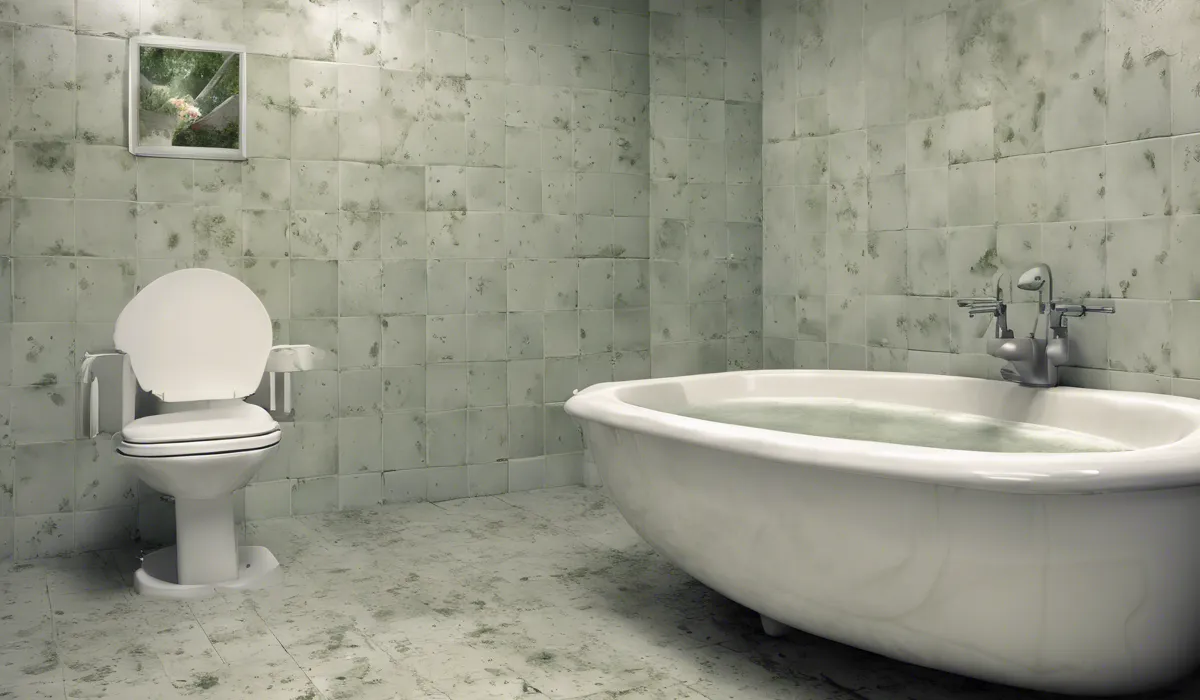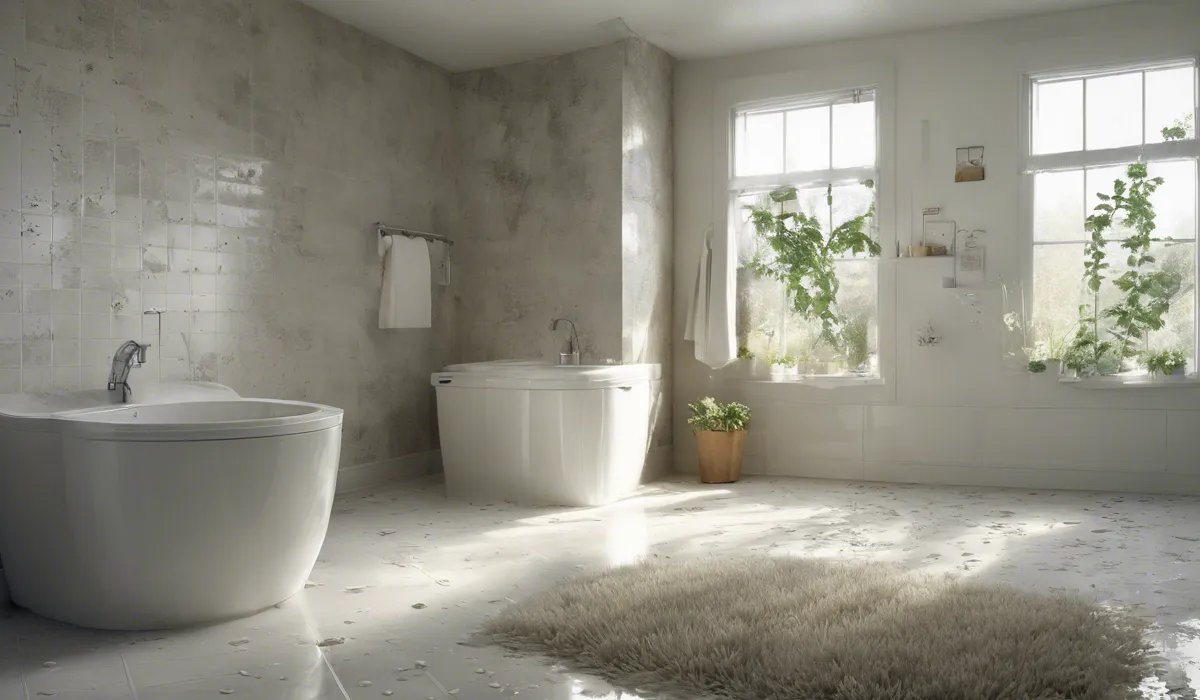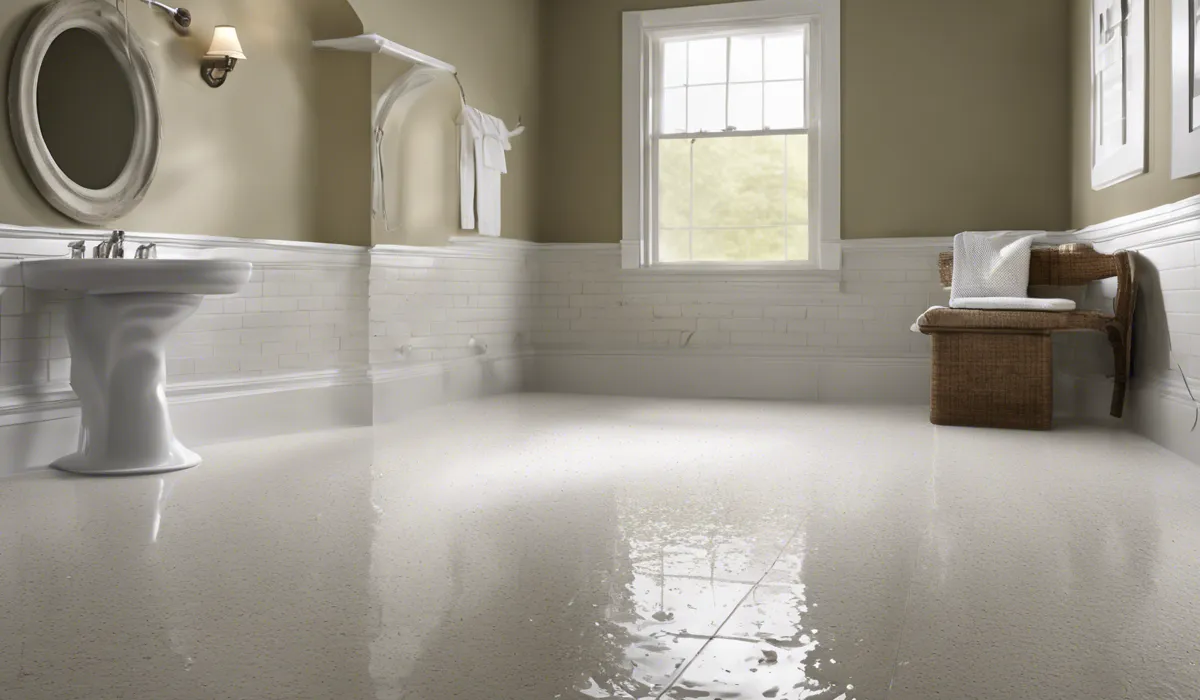Yes, bleach can kill mildew. It’s effective due to its disinfectant properties. Apply a mixture of bleach and water directly to the mildew, let it sit for several minutes, then scrub and rinse. Always use in a well-ventilated area.
Understanding Mildew and Its Differences From Mold

What is Mildew?
Mildew is a type of fungus that belongs to the same family as mold. It is a thin, superficial growth that typically appears as a patch of gray or white that lies flat against a moist surface.
Mildew thrives in damp environments and is often found in homes with humidity issues. Unlike molds, which can penetrate deep into the surface they grow on, mildew remains on the surface, making it easier to clean and remove.
Mildew vs. Mold: Spotting the Difference
While often used interchangeably, mildew and mold are distinct in their appearance and growth patterns.
Mold is usually black or green and has a fuzzy or slimy texture, while mildew is flat and powdery.
Mold tends to grow in irregular patterns and can cause structural damage to materials, whereas mildew is more likely to stay on the surface without causing significant harm to the underlying material.
Where Does Mildew Grow?
Mildew commonly grows in areas with high moisture levels such as bathrooms, kitchens, basements, and any area where there is condensation or water leaks.
It is often found on organic materials like paper, leather, and fabrics, as well as on damp walls, floors, and ceilings.
Health Risks of Mildew Exposure
Exposure to mildew can lead to health issues, especially for individuals with allergies, asthma, or compromised immune systems. It can cause respiratory problems, throat irritation, coughing, and can exacerbate asthma and allergy symptoms.
Therefore, it is important to address mildew growth promptly to maintain a healthy living environment.
Efficacy of Bleach in Killing Mildew

Chemical Composition of Bleach
Bleach is a powerful disinfectant composed primarily of sodium hypochlorite. When applied to a surface, it works by breaking down the proteins that make up the mildew, effectively killing it.
The chemical reaction also helps to lift the mildew from the surface, which makes cleanup easier.
Why Bleach is a Mildew Terminator?
Bleach is particularly effective against mildew because of its strong oxidizing properties. It not only kills the mildew but also helps to bleach the stains that mildew leaves behind, restoring surfaces to their original appearance.
Moreover, the disinfectant properties of bleach prevent the regrowth of mildew spores, providing a temporary protective barrier.
When to Use Bleach for Mildew Removal?
Bleach is recommended for mildew removal when dealing with non-porous surfaces such as tiles, countertops, glass, and certain plastics.
It is most suitable for areas where mildew is not deeply embedded, and the surface can withstand the harshness of bleach without damage.
Limitations of Bleach on Surfaces and Materials
Despite its effectiveness, bleach is not suitable for all surfaces. Porous materials such as wood, drywall, and certain fabrics can be damaged by bleach.
It can weaken fibers, cause discoloration, and in some cases, it may even exacerbate mildew growth by providing additional moisture if not used correctly.
Best Practices for Using Bleach to Kill Mildew

Safety First: Handling Bleach Correctly
When using bleach, it is crucial to take safety precautions to protect yourself and others. Always wear protective gloves and eyewear, and ensure the area is well-ventilated to avoid inhaling fumes.
Never mix bleach with other household cleaners, especially ammonia, as this can produce toxic gases.
Step-by-Step Mildew Annihilation with Bleach
To remove mildew with bleach, begin by diluting it with water—usually one part bleach to three parts water is effective. Apply the solution directly to the mildew-covered area and let it sit for several minutes.
Then, scrub the area with a brush to remove the mildew, and rinse the surface thoroughly with water. Always test the bleach solution on a small area first to ensure it does not damage the surface.
Alternative Mildew Fighters
For those who prefer not to use bleach, there are alternatives. White vinegar, hydrogen peroxide, and baking soda solutions are all natural remedies that can be used to treat mildew.
They are less harsh than bleach and are suitable for use on a wider range of materials.
Mildew Prevention Tactics
The best way to combat mildew is to prevent it from occurring in the first place. This can be achieved by controlling humidity in your home with dehumidifiers, ensuring proper ventilation, fixing leaks promptly, and keeping surfaces clean and dry.
Regular maintenance and cleaning of areas prone to moisture can go a long way in preventing mildew growth.
FAQs About Bleach Killing Mildew
Can bleach effectively kill mildew on surfaces?
Yes, bleach can effectively kill mildew due to its disinfectant properties.
What is the recommended mixture of bleach and water to kill mildew?
It is common to use a mixture of one part bleach to three parts water to kill mildew, but always refer to the bleach manufacturer’s instructions for the best ratio.
How long should bleach be left on mildew before rinsing?
Bleach should be left on the mildew for several minutes before scrubbing and rinsing.
Is it necessary to scrub the area after applying bleach to kill mildew?
Yes, after applying the bleach solution and letting it sit, you should scrub the area to help remove the mildew before rinsing.
Should bleach be used in a ventilated area when killing mildew?
Always use bleach in a well-ventilated area to avoid inhaling fumes, which can be harmful.
Final Thoughts
Bleach is a powerful disinfectant that can effectively eliminate mildew when applied correctly.
A diluted solution should be applied directly to the affected area, allowed to sit for a few minutes, and then thoroughly scrubbed and rinsed off. For safety, it’s essential to use bleach in a well-ventilated space.
